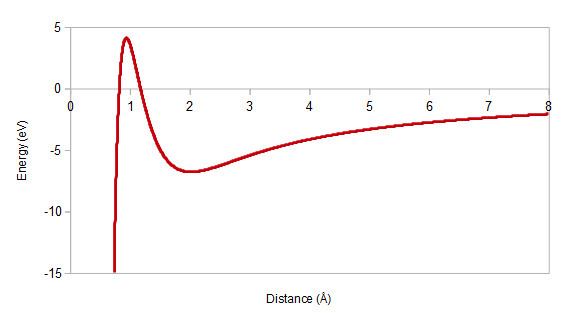 | ||
The Buckingham potential is a formula proposed by Richard Buckingham which describes the Pauli repulsion energy and van der Waals energy
Here,
Buckingham proposed this as a simplification of the Lennard-Jones potential, in a theoretical study of the equation of state for gaseous helium, neon and argon.
As explained in Buckingham's original paper and, e.g., in section 2.2.5 of Jensen's text, the repulsion is due to the interpenetration of the closed electron shells. "There is therefore some justification for choosing the repulsive part (of the potential) as an exponential function". The Buckingham potential has been used extensively in simulations of molecular dynamics.
Because the exponential term converges to a constant as
Coulomb-Buckingham potential
The Coulomb-Buckingham potential is an extension of the Buckingham potential for application to ionic systems (e.g. ceramic materials). The formula for the interaction is:
where A, B, and C are suitable constants and the additional term being the electrostatic potential energy.
The above equation may be written in its alternate form as:
where
